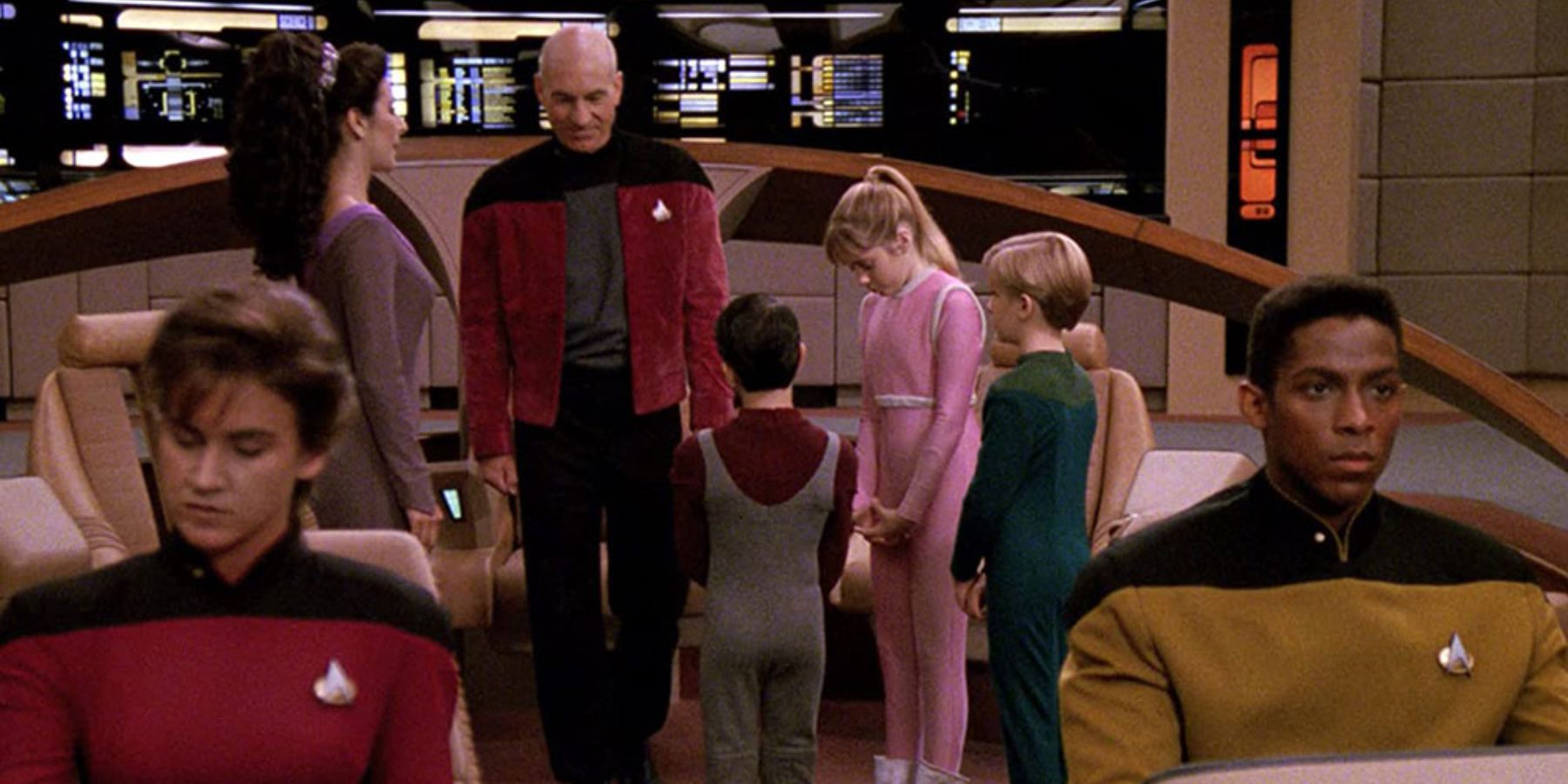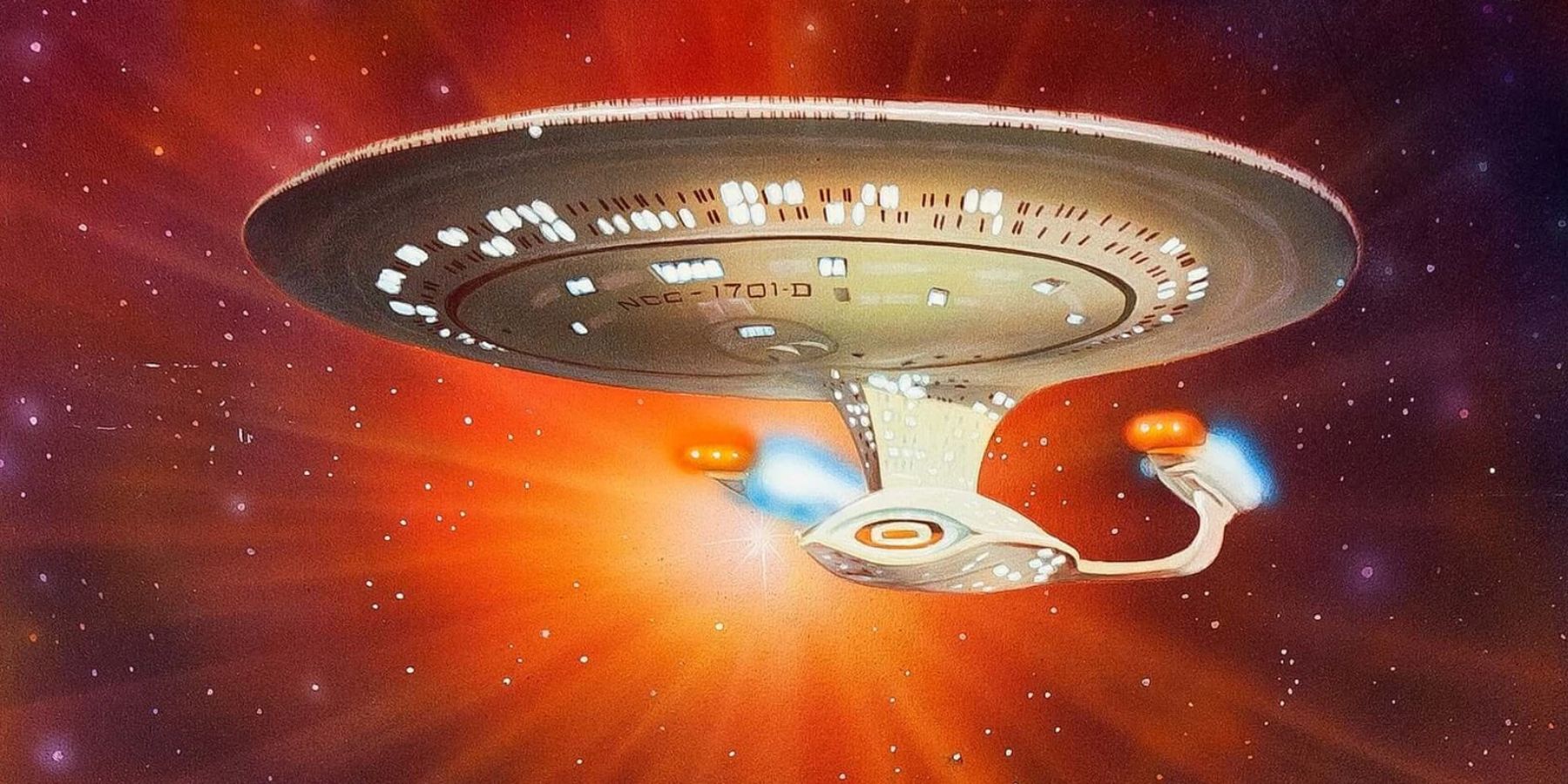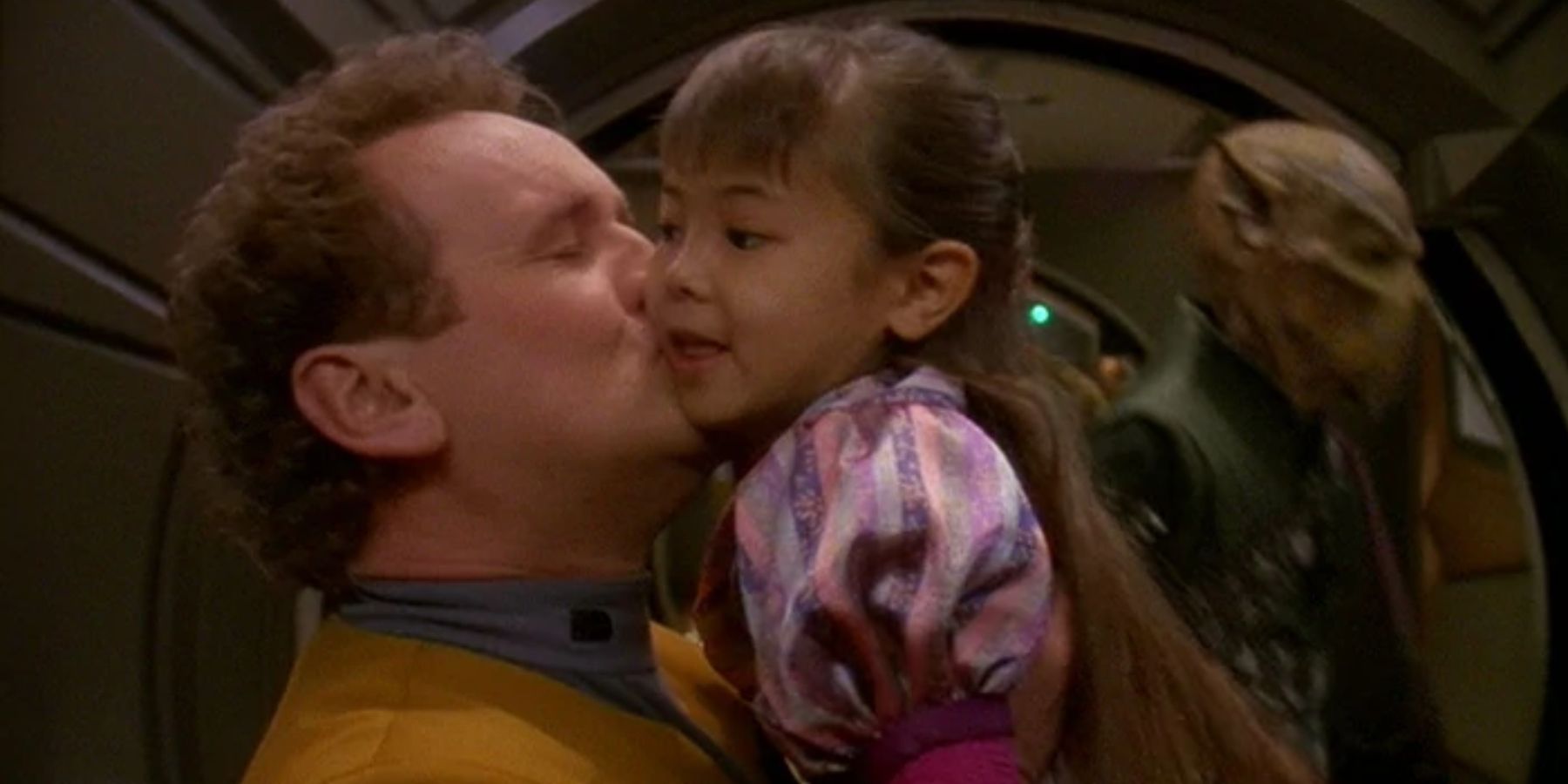Star Trek is a franchise filled to the point of overflowing with futuristic technology (some of which is on the brink of being achieved today), a range of complex socio-political cultures, and a massive cohort of alien races spanning the galaxy. Some of the most pivotal and arguably most important aspects of any Star Trek series, is not the characters, it’s not whatever mystery is facing the crew, but the vessel itself.
Over the years there have been various different iterations of the iconic USS Enterprise, from The Original Series all the way to Enterprise. However, one of the most divisive was the Enterprise from the much -oved The Next Generation TV show, under the command of Captain Jean-Luc Picard. Though beloved, the ship had one major complication — the vast amounts of civilians on board.
While this may not seem like an issue to begin with, it’s actually part of a much larger complication when one considers what this ship was actually intended for. The USS Enterprise (NCC-1701-D) was a galaxy class ship, and despite being the panicle of Federation technological advancement, the Enterprise D was used primarily as an intergalactic cruise ship. This is perhaps downplaying its purpose somewhat, but as it was built in a time of relative peace. The long war with the Klingon Empire had ended. The Vulcans' long-lost cousins the Romulans were not particularly friendly per se, but they kept to themselves. The Cardassians were being kept at arm's length by the crafty politicians of the Federation. Things were good for the alpha quadrant, so the need for large scale military ships was much lower. Instead, a focus on exploration and discovery took center stage.
It was apt, then, for a program that teaches the importance of self discovery and improvement, to have a scientific discovery vessel as their flagship, rather than devoting it to being a military-focused weapon of mass destruction — not quite the message the Federation or Gene Roddenberry were trying to portray. While the Enterprise D was not specifically a war ship, it was still capable of packing a punch. It was faster and stronger than any ship that came before it, and despite not openly advertising it, it also had the most firepower. It would easily have been classified as a battleship or battle cruiser. However, Starfleet were adamant to class it as an exploration cruiser, not made for war but to explore.
This non-militaristic function was why the ship had so many civilians on board, a combination of crew member families and "employees," for want of a better word. While a fair amount of military institutions today will often have a few civilians rattling around, whether in ports running stalls or providing various forms of entertainment, it is nothing on the scale present aboard the Enterprise.
This is most likely exactly what this large number of civilian crew members would do: running the necessary "civilian" style functions such as barbers, bartenders, teachers, waiters, the list goes on. They are shown various times throughout the show, the mysterious Guinan being a prime example running the Ten Forward bar. This is addressed in DS9 with the famous Miles O'Brien's wife Keiko, who is shown searching for a purpose aboard the station, trying out teaching and eventually settling on Bajoran botany. The Enterprise is as much a place for space exploration as it is self exploration, and discovery of what people really want to do with their lives.
These people would be a mixture of individuals wanting the space faring lifestyle, living in relative luxury while performing their roles, and the family members of Starfleet officers. It was supposed to be a five-year mission of exploration, and due to the relative peace the Federation were experiencing, they decided it would be fine for these family members to tag along. The problem, then, comes with the ridiculous amount of danger the USS Enterprise D is repeatedly put in.
It would make sense, after a season or two of various disasters occurring, like getting teleported across the galaxy to fend off against a race of robot zombies, that Starfleet might have thought twice about sending many innocent civilians into unexplored and dangerous areas of space. However, things continued in much the same way. These civilians were most likely given roles and direction in times of crisis, the red alert sirens ushering them to safe zones as well as them all being trained in some form of emergency relief: firefighting, first aid, etc.
The second issue becomes apparent when looking and the enormous scale of the ship. It has been estimated that the ship contains 8.9 million square feet (or 827,000 square meters) of habitable space. While this sounds like a lot, it’s hard to imagine this enormous scale without any context, so it’s important to factor in how many people were aboard. According to the ship's itinerary, there were around about 1,000 crew members, which included civilians. This would mean that if the population were spread out across the ship, then they would each have 8,869 square feet (824 square meters) of space just for themselves, showing how ridiculously large the ship is.
Putting this into perspective, the current largest cruise ship on earth is the Wonder of the Seas, holding around 6,000 people in a space a fraction of the size of Picard’s Enterprise (1,180 ft long, 154 feet acorns, and 240 ft tall, as opposed to 2,108 ft long, 1521 ft across, and 640 ft tall). Of course, there are a lot of centralized locations on the ship where crew congregate, but rather than the bustling metropolis the writers were intending, the ship would have realistically felt more like a ghost town.
Having civilians aboard the gigantic Enterprise D is a strange mix of bad ideas, constantly putting them at risk when exploring new and dangerous parts of the galaxy, and a necessity to try desperately to fill the ship up, populate the hallowed halls, and try and make the Enterprise feel alive. The writers created a problem however when they didn't truly take into account the absolute behemoth they designed, wrongfully assuming 1,000 - 6,000 crew members would easily fill the ship up.



